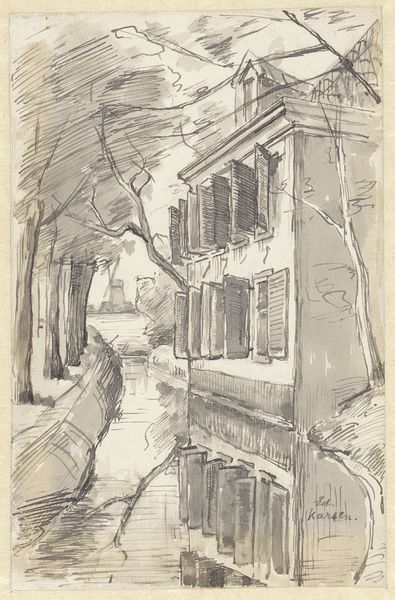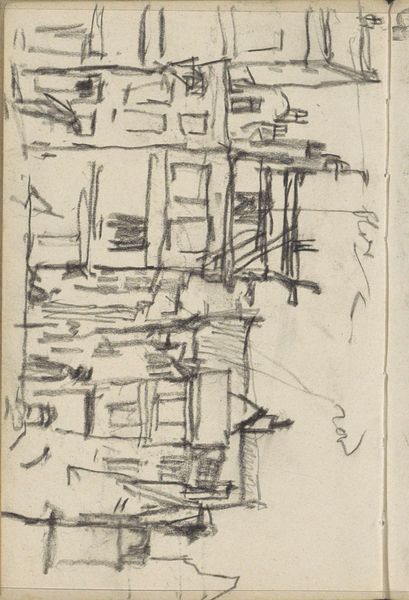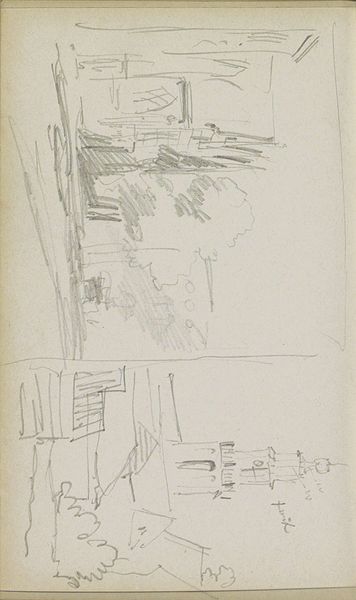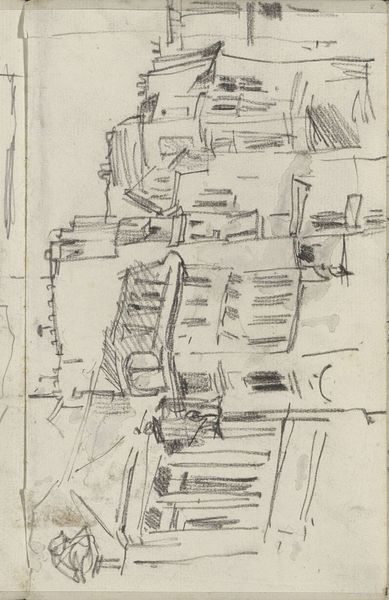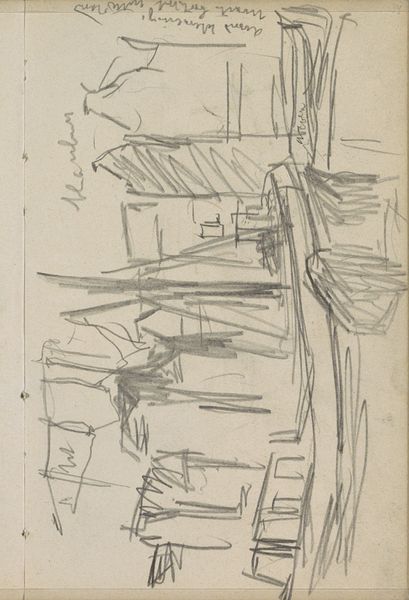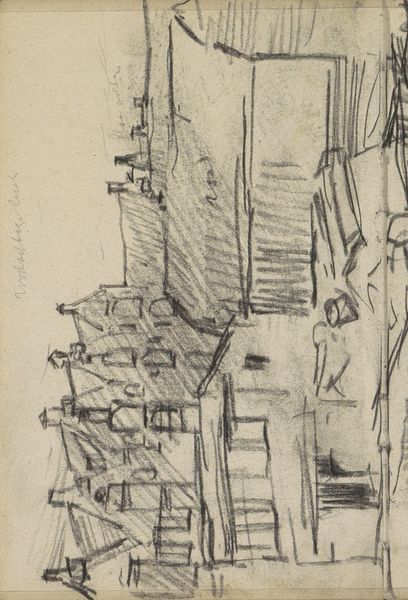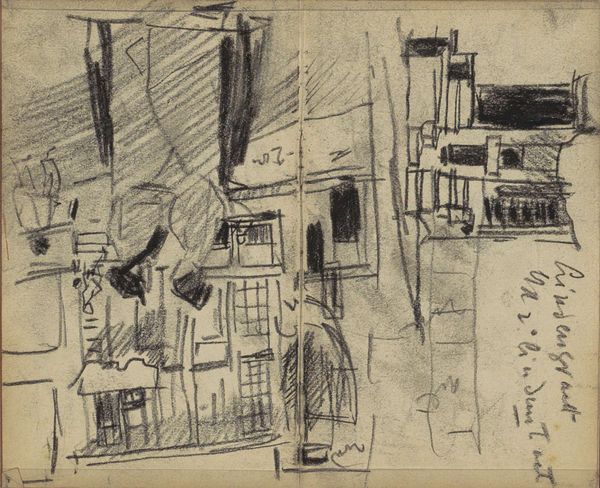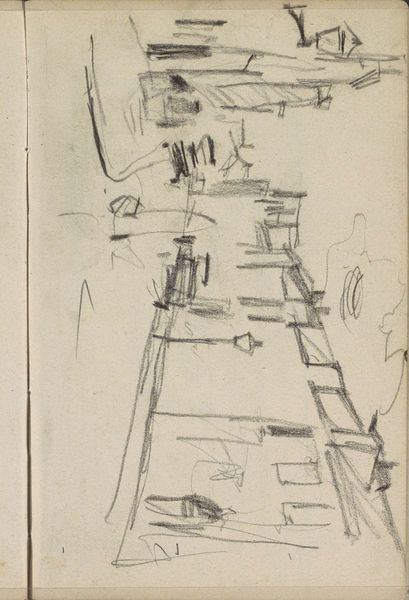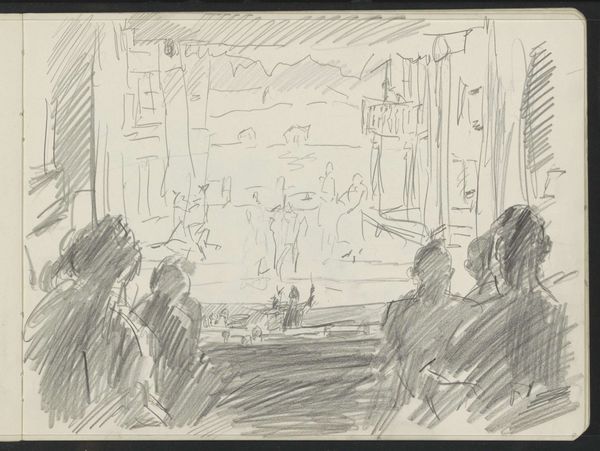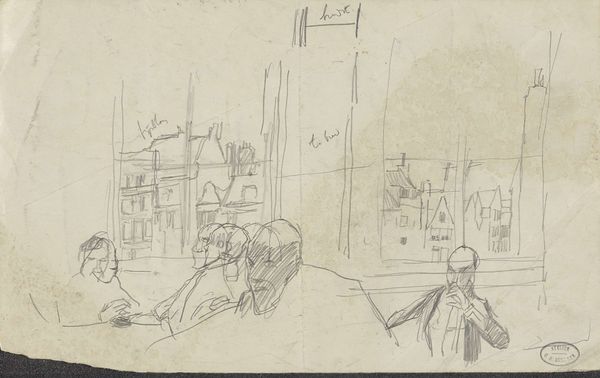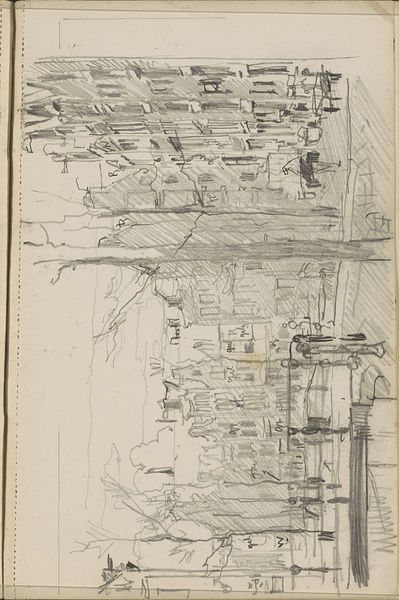
drawing, pencil
#
drawing
#
pencil
#
academic-art
#
realism
Copyright: Rijks Museum: Open Domain
Curator: Here we have Isaac Gosschalk's pencil drawing, "Interior of the Orpheum Theatre in Berlin," dating back to 1866-1868. What are your initial thoughts? Editor: It feels…sketchy, naturally, being pencil, but beyond that—restless. All those lines give a sense of constant motion, buzzing energy even in a supposedly static interior. Curator: Absolutely. I think the sketchiness speaks to the rapid industrialization and burgeoning entertainment culture of Berlin at that time. The Orpheum would have been a space for a diverse audience, transcending traditional class boundaries through popular performance. Editor: Which speaks to the economic changes, how entertainment becomes industrialized. You've got these rows of seats – mass consumption. I wonder if the chandeliers sketched on the side were made locally. That changes the artwork if Gosschalk wasn’t just depicting luxury. Curator: That is astute, prompting us to delve into the very construction and local context surrounding Berlin's cultural infrastructure in that era. What I find really interesting is how the architecture reflects the hierarchies within the audience, with the different tiers of seating. Access, even in entertainment spaces, remained stratified. Editor: Right. It looks like class divisions built right into the theater’s physical form. I can't ignore those hanging lights. They hint at the theater’s materiality. I mean think about it—coal-fired power lighting these decadent spectacles. It links glamour and grime together. Curator: Fascinating, those seemingly decorative elements were dependent on industrial mechanisms, influencing both their operation and the cultural associations of modernity. It forces one to acknowledge how advancements of industry influenced cultural expressions, literally, what goes into staging theatre spectacles. Editor: For sure. So in examining materiality we get past a simple idea about art reflecting social reality. It emphasizes production. The graphite Gosschalk used was mined, traded, turned into pencils. All those layers influence this snapshot. Curator: Examining production enables a holistic understanding of cultural works and how the means of creation shape representations and societal relationships. It encourages seeing beyond appearances. Editor: Well said. This small sketch becomes unexpectedly rich once we start unpacking its production and those societal threads. Curator: Precisely; by contextualizing Gosschalk’s work, we discover so much.
Comments
No comments
Be the first to comment and join the conversation on the ultimate creative platform.
